FISHING REPORT: Reds limited but Snook back in play for Halifax, Indian River, Ponce Inlet
Happy Snook Season, y’all.
Starting Thursday (Sept. 1), as stricter redfish rules were put into play, snook went off its summertime catch-and-release list, bringing back one of the elements making it a true triple-threat.
1. They’re great fighters and instinctively know to drag you toward anything (barnacle-covered pilings, especially) that’ll rip through your line.
2. They’re excellent on the table, with firm, white meat. Provided you remove the skin first. (More on this in a bit.)
3. They’re downright beautiful, in a sporty way. That black racing stripe, running from gills to tail, accentuates the snook’s long silhouette. They’re almost too pretty to eat.
Almost.
FISHBITES: The idea for Fishbites began with young Billy Carr in New Smyrna Beach
LET'S EAT! At Ike's Granada Pier shop, come for the bait, stay for the collards!
Now, multiply this by 2, since the snook is no stranger to creeks and canals labeled as fresh-to-brackish water. Diadromous, they call these types of fish.
But here’s the catch with this prized catch: From now until they go off-limits again in mid-December, the daily limit is one per angler, and there’s a narrow slot to meet — 28-to-32 inches.
And yes, that’s the only way you’ll get to test the taste, because the commercial sale or purchase of snook is illegal in Florida.
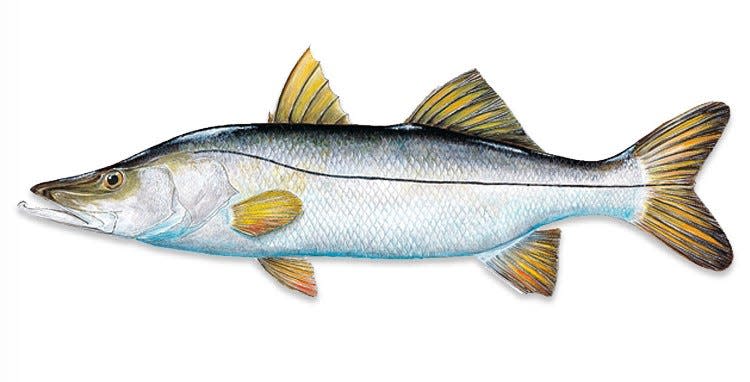
Snook: A tutorial, and yes you need a fishing license and permit
OK, you ready to give it a go? For your pregame pep talk, we bring in Gene Lytwyn, a veteran angler of these parts and longtime owner/operator of The Fishin’ Hole in Daytona Beach. Gene, the floor is yours.
• Where, when: “A few of the snook hot-spots are the north jetty (Ponce Inlet), Main Street bridge, NSB north causeway bridge, Highbridge (north of Ormond), and the State Road 100 bridge in Flagler. These spots are best at night, generally with an incoming tide.”
• Where else: “There are lots of snook in the back-country but they tend to be undersized. We have seen an increase in the number of snook, and their size, in the past few years. We are also seeing a few more snook around the surf and ocean piers, which was unheard of 20 years ago.”
• How: “The most popular live baits are larger shrimp, small finger mullet, and small pigfish. As far as artificials go, the most popular ones in this area are Bomber Windcheater, Bomber Long A, Nils Master, Rapala X-Rap, and Vudu swimbaits.”
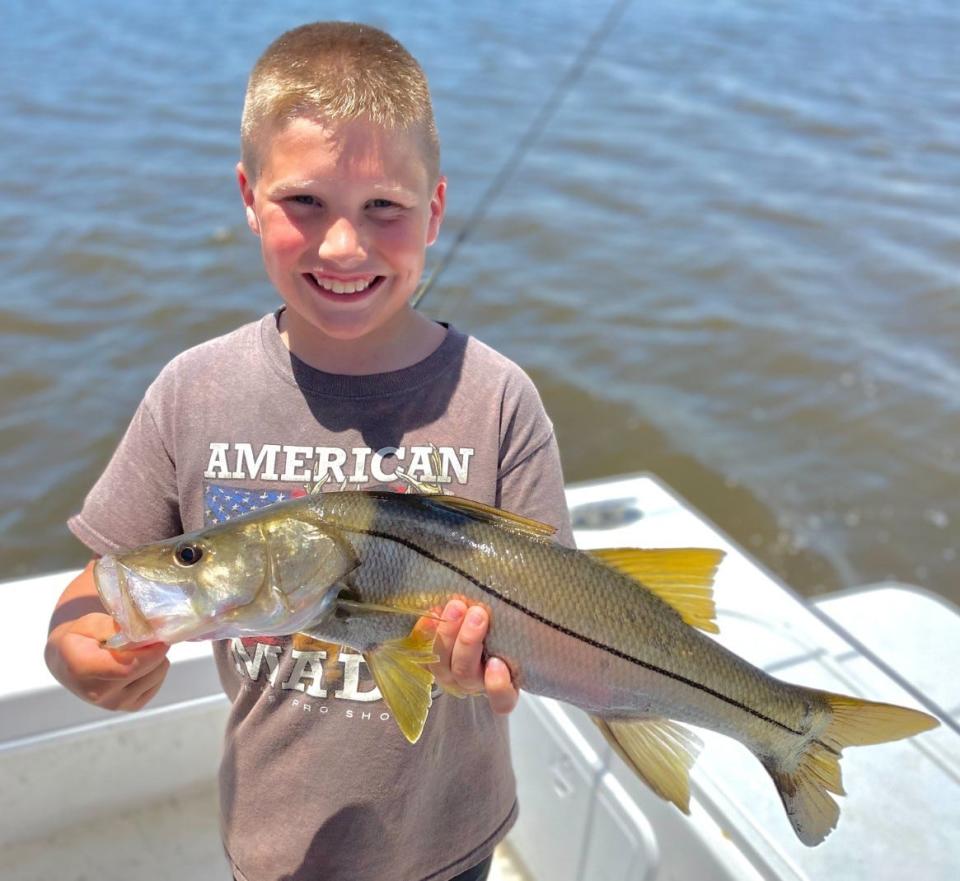
Unless exempt, along with your Florida saltwater fishing license you'll need to purchase the $10 annual permit in order to ever keep a snook — yes, from boat, shore or dock. All available online at MyFWC.com
Snook were once called 'Soap fish,' and here's why
Assuming you ever bring a snook to the filet table, you absolutely must remember to remove the skin. Sometime around the middle of the previous century, someone decided to do that before cooking a snook.
Did it make a difference? Today, snook is a delicacy. Before they thought to remove the skin, it was commonly called “soap fish” and sold for pennies a pound. Yes, it makes a difference.
One more thing. Chances are, the snook you catch will be illegal, outside the slot limit. Or maybe inside the slot but you’ll release it anyway.
Either way, treat it properly. You can “lip” a snook like you can a largemouth bass, but if you’re doing that to get a picture, hold the fish horizontally, supporting it under the belly — they’re not built for vertical pressure and you can damage its organs.
And watch yourself, too. Those gill plates are razor-like, and the spines on its fins can also do some painful damage.
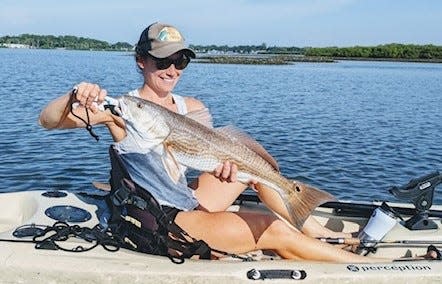
Halifax/Indian River: Mangroves galore, but big reds, permit around Ponce Inlet
Yes, the calendar now says September, which symbolically signals the oncoming fall, but in the intracoastal, the heat-seeking mangrove snapper is still blanketing the scene.
Up at Granada Pier Bait & Tackle, Ike Leary says his folks are also landing some sheepshead and black drum from the pier.
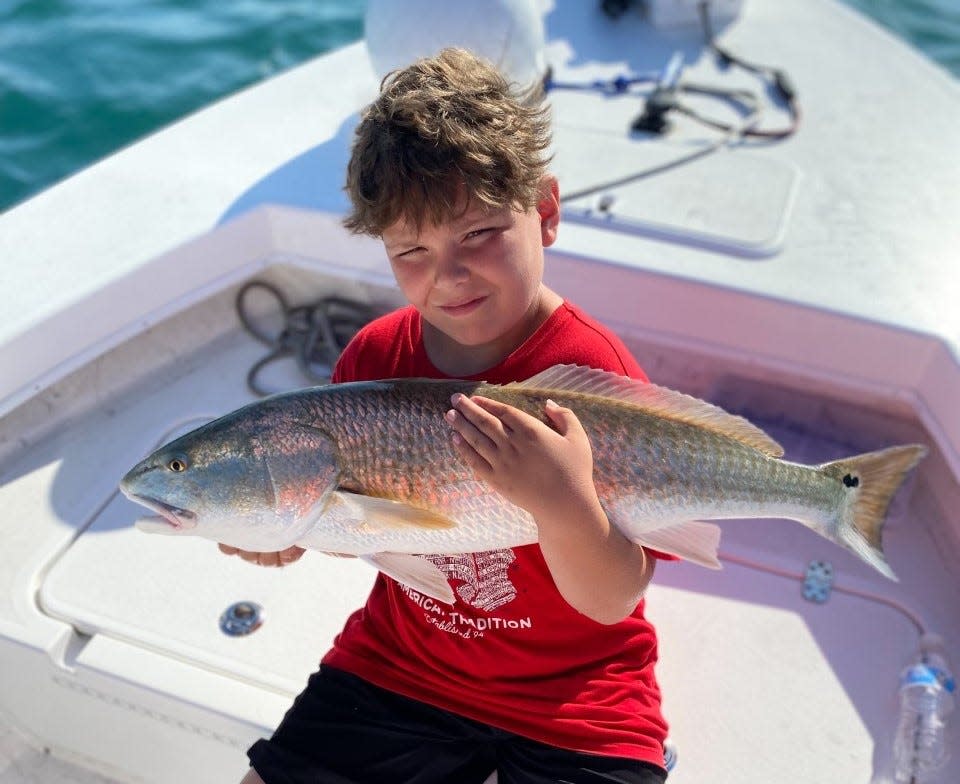
If you’re thinking snook in the Port Orange area, Craig Patterson says the best live-bait bets are pigfish, croakers and big shrimp. He just so happens to offer all of the above at Donald’s Bait & Tackle on the causeway.
Capt. Jeff Patterson (Pole Dancer charter) said he’s had a great week, including a midweek trip around Ponce Inlet that saw four catch-and-release reds (all 30-35 inches) brought to the boat. He also put some folks onto some permit and, yes, a mess of mangrove snapper.
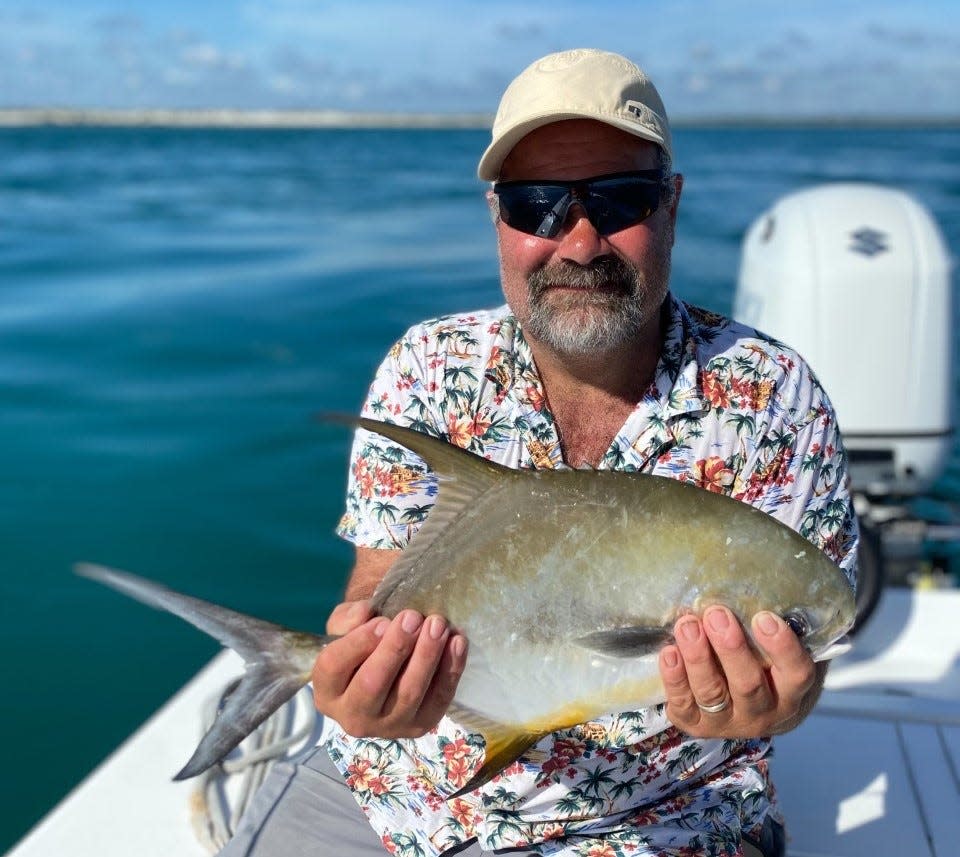
He’s finding snook around bridges and in the inlet, he says.
“Tarpon are on the bait pods on the beach one day, and tough to find the next,” he adds.
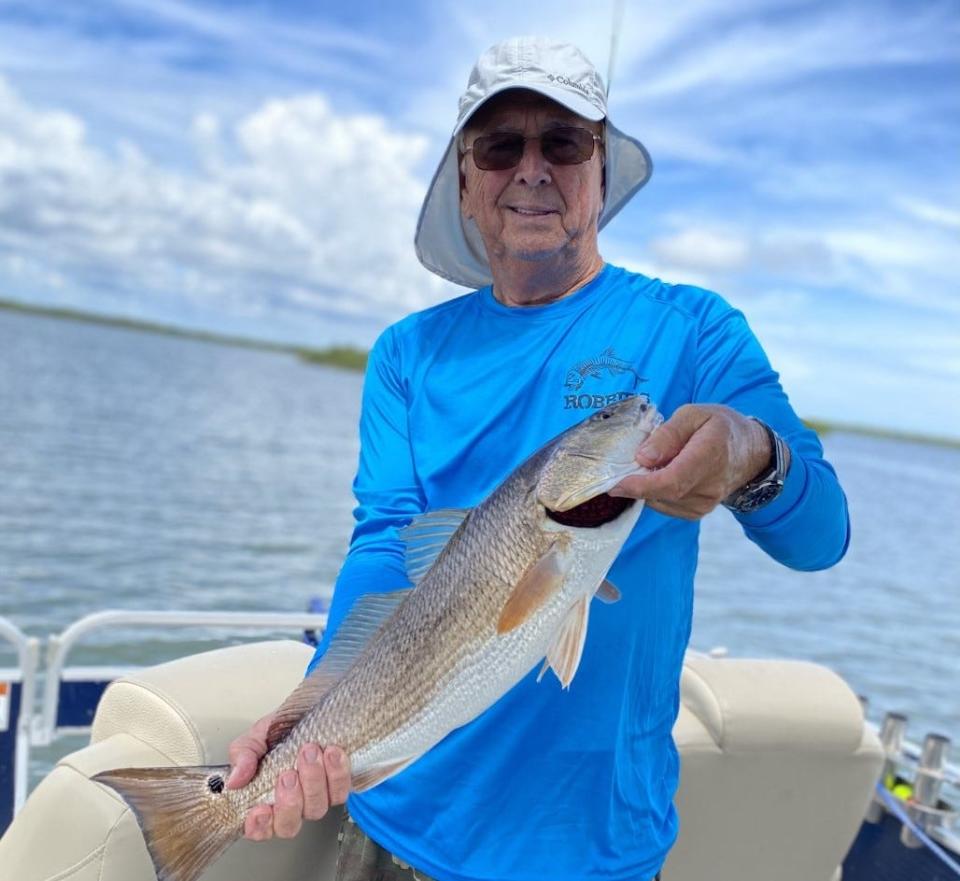
Offshore: Leave Ponce Inlet, options abound
Craig Patterson is hearing about nearshore artificial reefs producing catches of flounder, weakfish and sheepshead on live bait.
Further offshore, the Sea Spirit has been bringing in boatloads of keepers to bring back to its Ponce Inlet dock.
Surf: Sandfleas are back, and the whiting love them
Whiting is still the best catch available in any numbers.
Again, as noted last week, sandfleas are trickling back and can be found in most bait stores now. They’re a favored taste of many quality surf fish, and the veteran anglers insists it doesn’t matter if they’re live or frozen.
Whiting also take a shine to shrimp and clam, and will put a move on Fishbites, if you prefer artificials.
Flagler County: Matanzas Inlet offers the full menu
Capt. Mike Vickers (Hammock Beach Bait & Tackle) says a lot of baitfish are making their way north in the surf, and therefore some tarpon hits (and misses) have been reported.
As the bait migration continues, he says, “expect the surf to start getting real active with jacks, reds, drum trout, flounder and sharks.’
“For now the main bite remains whiting, a few pompano, flounder, jacks and sharks. But this can change day to day.”
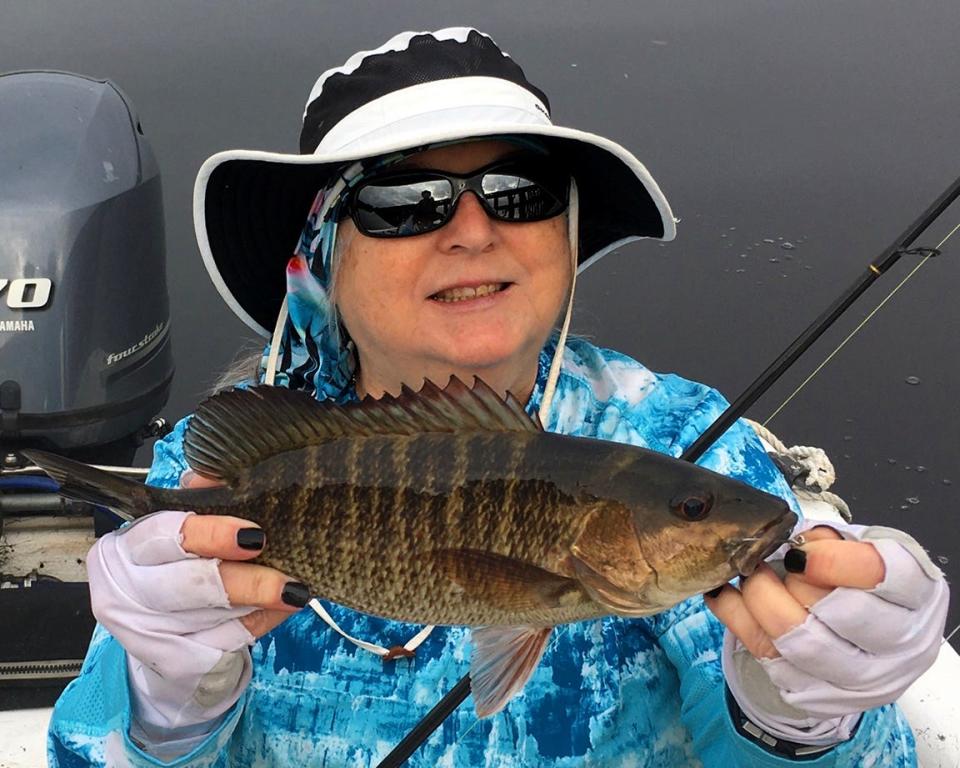
Anglers are catching a variety of fish at the Matanzas Inlet, Capt. Mike says, while the mangrove snapper are still the most common (edible) catch in the ICW. Reminder: 10-inch minimum, daily limit of five.
Capt. Mike looks at the calendar and swears friendlier temps, fewer thunderstorms and better overall fishing will be here before we know it. “So now is the time to make sure all your tackle and gear is in top shape,” he says, adding that it’s a great way to kill time during the afternoon storms.
St. Johns: Lazy days, from DeLand to Astor and Lake George
Bait-sized shrimp have inched their way toward the northern end of Lake George, Kerry McPherson reports from his South Moon Fish Camp in Astor. Except on rare occasions, that’s about as far south as they come. By later in the fall, they’ll graduate from bait to big enough for the plate, or at least that’s the plan.
Meanwhile, Kerry is gearing up for the third and final holiday weekend of summer, with families, and their boats, filling up the camp’s accommodations. There’s a pattern, he says.
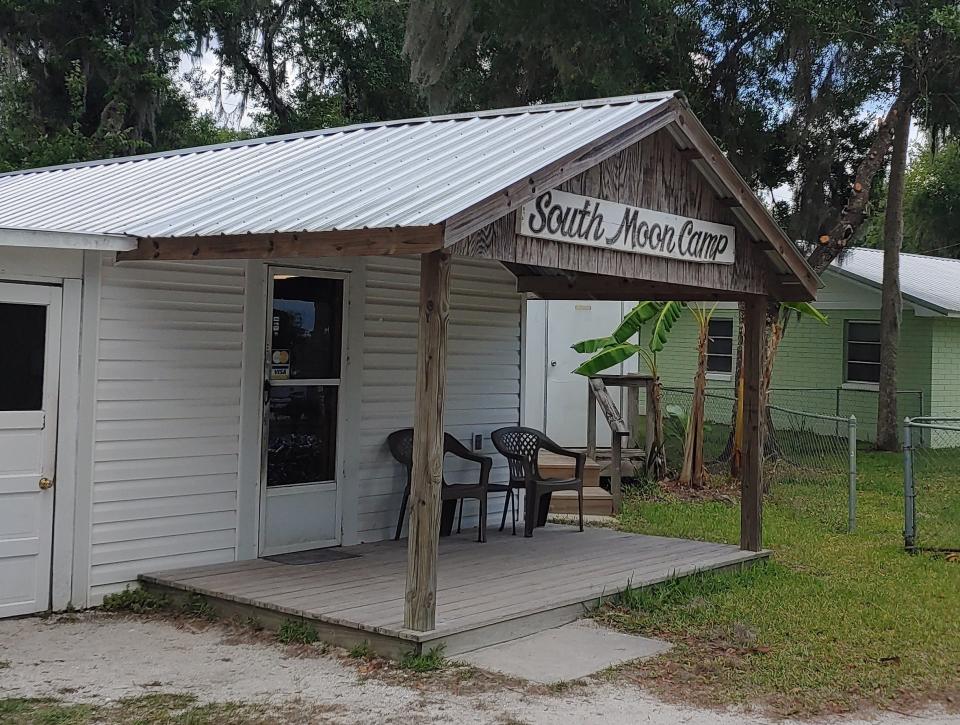
“Memorial Day, we get a lot of folks from Titusville, Oak Hill, that area,” he says. “July Fourth, it’s folks from the New Smyrna area. And Labor Day it’s a lot from Daytona and Flagler County. All my holidays are locals. That’s good, I know what to expect.”
The fishing is also slow to the south in DeLand, but Highland Park’s Capt. Ronnie Paige said one of their locals returned this past week with a mess of decent-sized bass.
Capt. Ronnie says we’re looking at a few more weeks before conditions become more favorable for the better panfish.
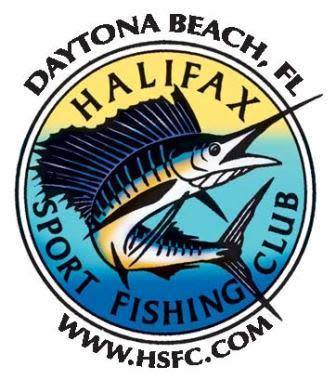
Save the Date: Everyone can learn to fish
The Halifax Sport Fishing Club has a couple of events coming up.
The annual “Kids Can Fish, Too” clinic is set for Sept. 10 (next Saturday) at the Sunglow Pier in Daytona Beach Shores.
It’s for kids 6-15 and includes instructions on every aspect of fishing. Gear is provided, and the first 50 kids registered get a free rod-and-reel.
Also, on Sept. 15 at the club (3431 S. Ridgewood, Port Orange), the monthly meeting will include a free fishing clinic to anglers and would-be anglers of all ages.
For more info: HSFC.com.
Hook, Line & Clicker: Send us your fish pics
We want to see your most recent catch. Email your fish photos to ken.willis@news-jrnl.com.
Please include first and last name of angler(s), as well as type of fish (we're occasionally stumped). All are included with our online fishing report, and some occasionally make the print edition.
Do I need a fishing license?
You can find all the license info, including exemptions, on Florida's Fish and Wildlife Commission website: MyFWC.com. But the basics are:
No: If you're 65 or older, 15 or younger, you don't need a license.
No: If you're fishing with a licensed guide or charter boat, both of which purchase commercial licenses that cover their customers.
Yes: Most everyone else, including visitors from other states.
Yes: Even if you're a shore-based angler (shoreline, dock, pier, bridge, etc.). However: The shore-based license is free . . . But: You still need to register for that free license.
Where do I get a license, and what does it cost?
Many bait shops sell licenses, as do the bigger retailers (Bass, Dick's, Walmart, etc.).
Florida's FWC uses a third-party site for buying or renewing fishing licenses: GoOutdoorsFlorida.com.
The cost: $17 for an annual license.
Don't forget: Whether you're fishing fresh or saltwater, you need the specific license. Freshwater and saltwater licenses are both $17 annually.
I'm on vacation, do I need a fishing license?
Yes you do, and they're also available at GoOutdoorsFlorida.com or certain bait shops and big retailers.
Cost: $17 for three days, $30 for seven days, $47 for a year.
Also: Non-residents need to purchase that license even if they're just fishing from shoreline or shore-based structures. (Florida residents need that license, too, but they're free.)
This article originally appeared on The Daytona Beach News-Journal: Redfish limited, Snook in play for Halifax, Indian River, Ponce Inlet

